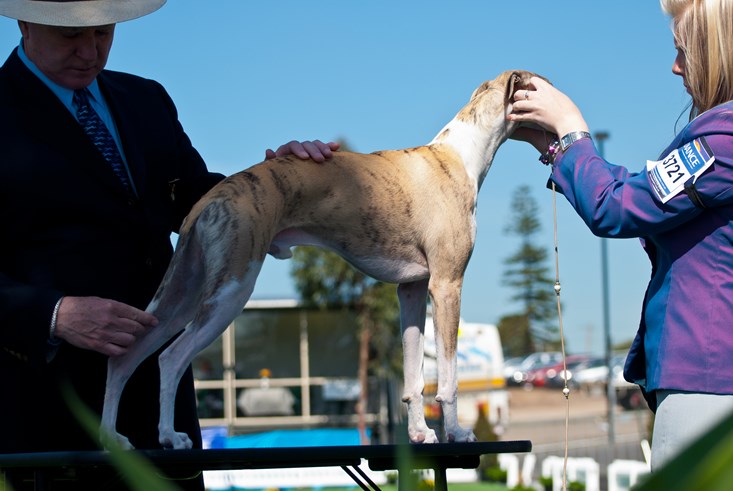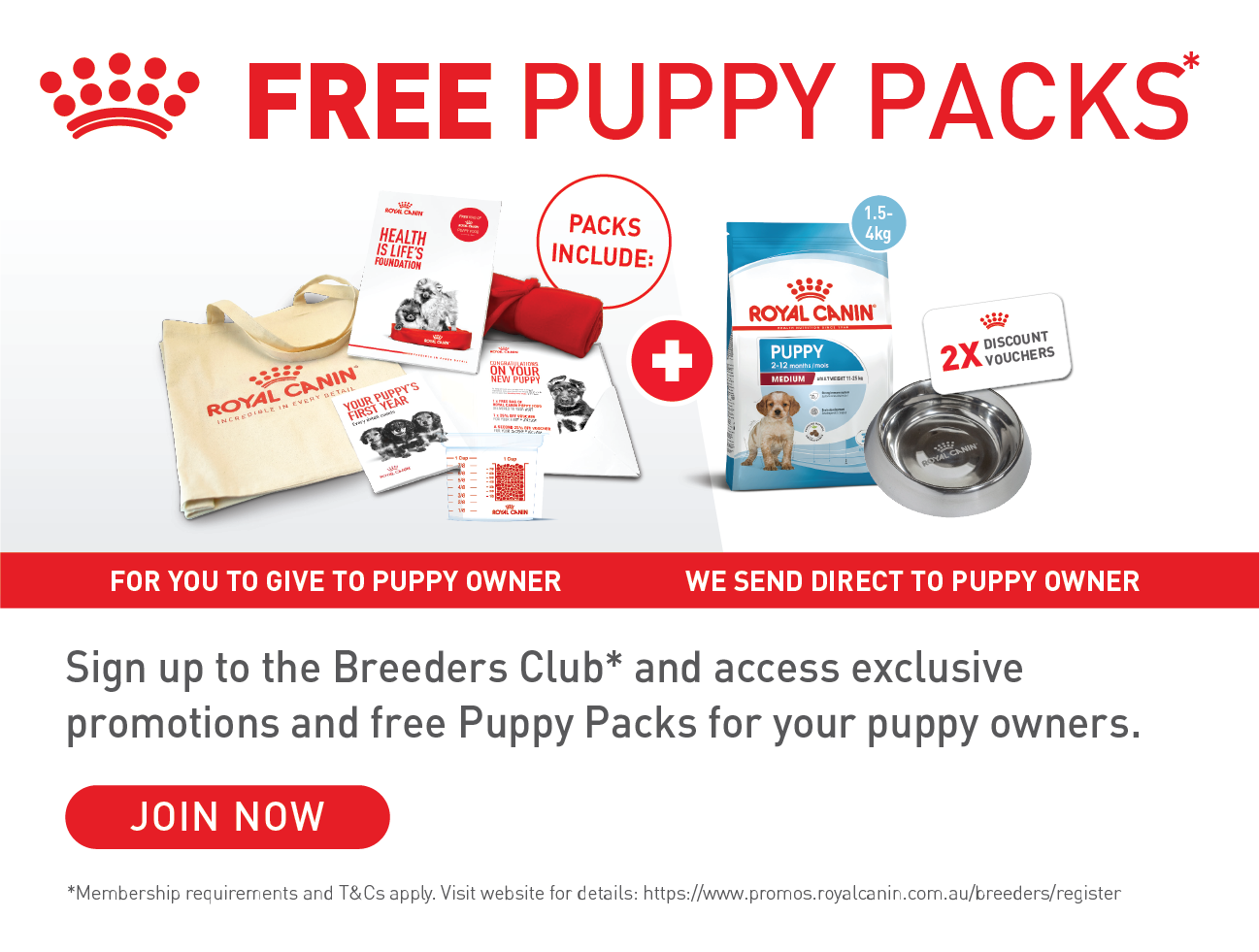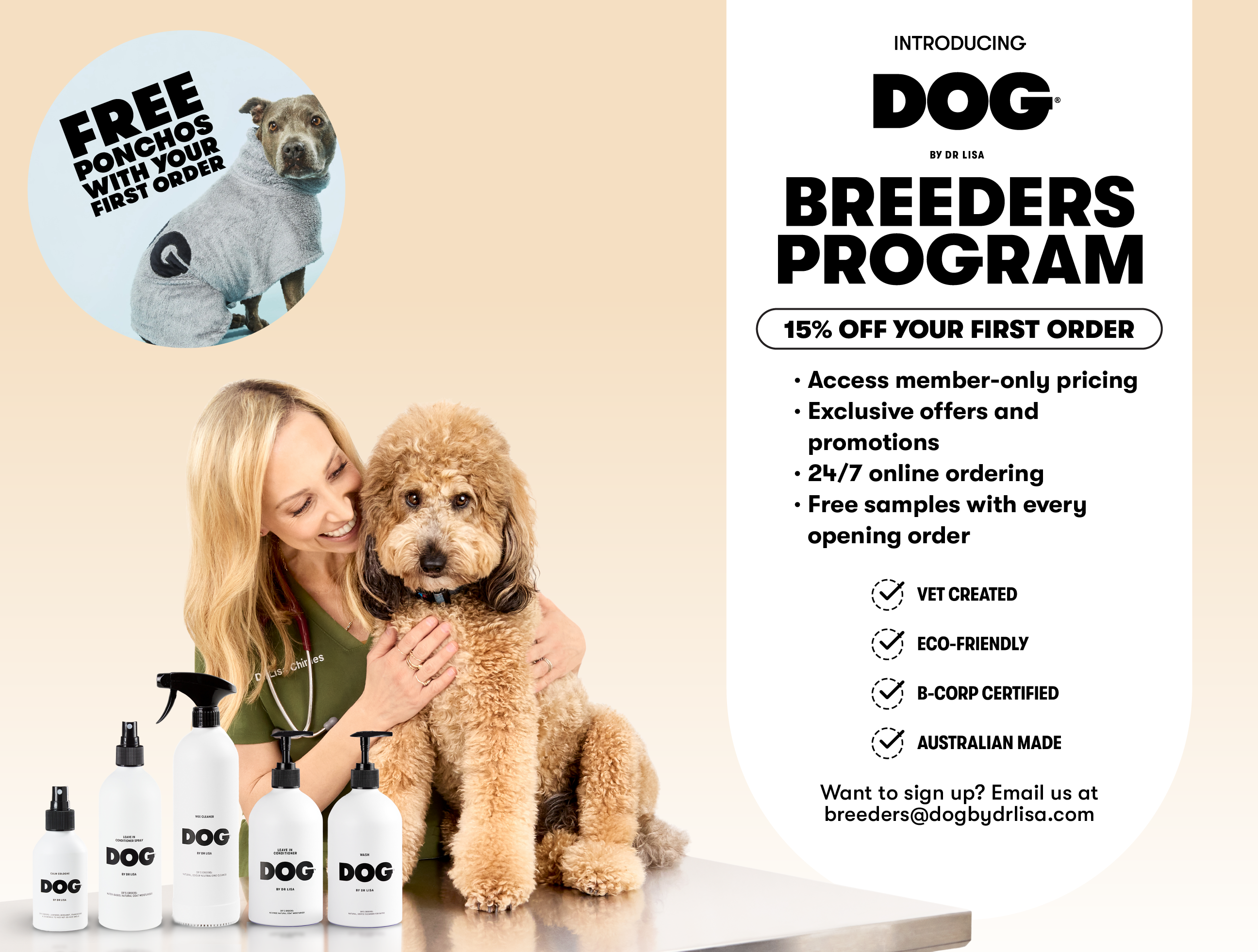Conformation (Showing)

Showing dogs is a fun sport where the thrill of competition is combined with the joy of seeing beautiful dogs. Dog shows, or conformation shows, originated as a way for breeders to evaluate their breeding stock. While the purpose remains, dog shows are a great opportunity to socialise with people in your breed and develop friendships that can span a lifetime.
Most dogs entered in conformation events are competing for points toward their Australian champion title. At a championship show best of breed and challenge certificates are awarded. A best of breed and challenge certificate evidences the number of points awarded at the fixture towards the title of Australian champion. At these shows only qualified judges officiate.
An open show is an exhibition of registered dogs at which no best of breed or challenge points are awarded, but dogs which have been awarded the title of Australian champion may compete. At these shows trainee judges officiate and it is considered the training ground for all young dogs and owners. It is particularly good to help socialise your dog as you may show your puppy from the age of three months.
New to Showing a Dog Exhibitor Manual
Our New to Showing a Dog Exhibitor manual provides information about:-
- Showing your dog
- Competing in activities
- Registering your new dog
- Entering a show or trial (online and paper/postal entries)
Click here to read ''New to Showing a Dog Exhibitor Manual''
Click here to view the show judging flowchart.
Listing of table, ramp and ground breeds as referenced in Clause 2.7 of Dogs Australia Regulations Part 5 - Conformation Show (effective 1 Januaray 2024)
Show Training Days
The Dogs Victoria Open Show Committee run 12 open shows each year. The shows are held at KCC Park (State Dog Centre) and the Bulla Exhibition Centre. These events are specially designed for the new exhibitor and are a great training ground with mentors available to assist.
Online Entry Providers
While Dogs Victoria does not have a preferred online entry provider clubs use either Showmanger or EasyDog Entries as their online provider.
Links to either company can be found by clicking on their logo below.
Click here to access Show Manager's Help Centre
Click here to access EasyDog Entries 'Getting Started' guides for Clubs and Exhibitors.
New to the world of dog shows and need advice?
Feel free to contact a member of our Conformation Committee who will be happy to assist you.
|
Julia Jones (Chair) |
0458 289 191 |
shinanoakitas@bigpond.com |
|
Esther Joseph (Deputy Chair) |
0407 330 270 |
|
|
Pauline Grutzner |
0419 513 201 | sunfire@hotkey.net.au |
| Colin Hamilton |
0418 995 681 |
|
|
Greg Browne |
0404 482 737 | |
| Shellie Marshall | 0433 796 333 | |
|
Craig Phillips |
0403 126 986 |
|
|
Robynne Spencer |
0413 451 454 |
|
|
Stephanie Rickard |
0402 318 638 |
|
|
Suzanne Thomson |
0408 154 692 |
How to enter an exhibit in a dog show
When you have read the schedule, you will note a number of important features of the show are quoted:
- the date of the fixture
- the type of fixture, championship show, open show or competition
- the judge or judges officiating
- the name and address of the Kennel Club Secretary to whom the entries should be sent
- the closing date of entry
- the classes offered for the breeds
- and many more other matters pertinent to the show
If you are lodging an entry form for your first show we recommend you seek advice and assistance from an experience person, maybe the person from whom you purchased your puppy. Once you decide on the fixture in which you wish to enter, you will need to do the following:
- Complete an official entry form. These may be purchased from the Dogs Victoria office or downloaded from this website. Entry forms are printed in easy 'cheque book' style with a butt to provide a record of your entry for future reference. Also a booklet of entry forms preprinted with your dog's details may be obtained, for a small charge, and this will save you writing out the same details every time that you enter a show. Or you can download the conformation entry form (available in the members area), an interactive PDF that allows you to enter and save details.
- If you have a booklet of blank forms complete the entry form in ink in block letters or in type ensuring all the information entered in the appropriate places is correct. We recommend you copy the information direct from the registration certificate.
- When you have completed filling out the entry form and are satisfied all the details entered therein are correct, place the entry form in an envelope addressed to the show secretary as shown in the schedule along with a remittance (cheque or money order) covering the entry fee and purchase of the show catalogue which comprises a program of all dogs entered in the show under their respective breeds and classes, a standard size stamped, self-addressed envelope for return of exhibit number or acknowledgement of receipt of entries and payment of the show catalogue.
Exhibit number
Within seven to 14 days prior to the date of the fixture you should receive, in the mail, return of your stamped self-addressed envelope with your exhibit number, catalogue receipt and a listing of the first number in each group.
Preparing for the show
As the day of the show approaches you should be preparing your dog by regular grooming and training so that it may be presented to the judge in top show condition and trained to behave correctly in the judging ring.
The best way to ensure your exhibit has an equal opportunity in competition is to present it in the best possible show condition by pursuing a regular grooming and training program every day. The top winning exhibitors will tell you that you win your prizes in the backyard by grooming and training your dog - you only go along to the show to collect them! Diet and exercise also play a large part in presentation of your dog.
Certain breeds require special preparation/trimming and information in this respect can be obtained from your breeder, the appropriate breed club and /or publications on the breed which is available from the Dogs Victoria Laurie Luxmoore Library.
On the evening before the day of the show, prepare for your departure by:
- Assessing the travelling time you will require to arrive at the show venue in plenty of time to settle down prior to the judging starting time and particularly allowing time for any unforeseen event which may cause you delay en route
- Pack the grooming gear, the dog's leash, a drink container and any other equipment you may require for preparation and/or comfort of your exhibit
- It is worthwhile to consider also a foldaway chair and a table if you have these items available and any other items for your personal comfort, wet weather gear, beach type umbrella, sun hat, sun block, food, etc., and, of course, water for your dog
- Don't forget:
- your show ring exhibit number and clip to pin to your jacket or blouse
- the fixture schedule
- your entry form butt
The day of the show
On the morning of the fixture arise early leaving home at a time which will allow you to travel to the show venue without panic.
On arrival at the show
Attend to your exhibit so that it is comfortable whilst awaiting your call to the judging ring. Under no circumstances leave your dog in your vehicle during hot weather.
Present your catalogue slip to the show secretary's office and on receipt of your catalogue check your entry in the class (or classes) entered and assess the approximate time your breed will be judged by:
- allowing approximately 40 catalogue exhibit numbers per hour
- keeping the judging ring in view so that you can see what breed is in the judging ring at any time
Before you bring your dog to the ring, and again when you are waiting to be called in for your class, watch how the judge is going about the task. Almost every judge employs a different technique, how the dogs are paraded, where they stop, which pattern of movement is required, where the dogs that are fancied are placed in the initial stages, how different handling methods are viewed and so on. An astute exhibitor can learn a lot by carefully observing the judge's methods and requirements.
Present your exhibit at the ringside in sufficient time to be able to answer the steward's call.
How does my dog become a champion?
Your dog needs to win a total of 100 points to become a champion and 1,000 points to become a grand champion.
Points are awarded at the judges discretion to be best of each sex of each breed (over six months of age) at a championship show, there are also additional points allocated to the best of breed winner.
Challenge points are calculated as follows, five points plus one point for each dog in competition (over six months of age). The maximum points available to any exhibit at any one show is 25 points.
In the judging ring
Pay attention to the judge's and steward's instructions. Exhibitors will be required to:
- Parade their dogs on the left hand side
- Bring the dog to the judge and stand it to the best advantage
- Move the dog from and back to the judge as requested
- control and exhibit the dog to the best advantage during the judging
Exercises
Up and back
With the dog's leash in the left hand all the time, move up to the ring edge directly in front of you. Turn so the dog turns to the left on the inside. Return to the judge and set your dog up.
Correct triangle
Start with the leash in the left hand and move to your right hand top side of the ring. Now move across to the other top side and now return directly to the judge. Set your dog up.
'O' Pattern (for around the ring)
Simplest of all. Start with the leash in your left hand move anti-clockwise and finish where you started. Set your dog up.
When you have been judged remain within the precincts of the judging ring until your breed judging is completed.
Once you have more experience and all of this is second nature, don't forget that it was once all new to you and lend a hand to other new exhibitors who may not be as confident.
Extreme Weather - Conformation
Dogs Victoria Management Committee reviewed the extreme weather regulations in April 2017.
These regulations (Part 7 Regulations - Conformation, Regulation 7.6.8) covers hot weather, fire danger and gale force winds / thunderstorms / flood. This regulation applies to all Conformation shows in Victoria.








